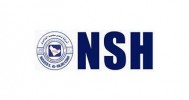
i
Steer Engineering
Filter interviews by
Steer Engineering Product Manager Interview Questions and Answers
Be the first one to contribute and help others!
Interview questions from similar companies

Interview Questionnaire
1 Question
- Q1. How will you implement ISO systems, and how will you educate site engineers about quality improvements ..
- Ans.
I will implement ISO systems by conducting a gap analysis, creating a plan, and providing training to site engineers.
Conduct a gap analysis to identify areas of improvement
Create a plan to implement ISO systems
Provide training to site engineers on ISO standards and quality improvements
Establish a system for monitoring and measuring quality performance
Encourage continuous improvement through regular audits and reviews

I applied via Referral and was interviewed in May 2022. There was 1 interview round.
(2 Questions)
- Q1. Technical and Managerial.
- Q2. Software Revit and BIM360
Interview Preparation Tips

Project Manager Interview Questions & Answers
Oceaneering Internationalposted on 17 Jul 2024
Questions on resource management
Senarios about work and attitue
Interview Preparation Tips

I applied via Naukri.com and was interviewed before Jul 2023. There was 1 interview round.
(2 Questions)
- Q1. Do you have any inspection experience
- Ans.
Yes, I have extensive inspection experience in previous roles.
I have conducted regular inspections of equipment and facilities to ensure compliance with safety regulations.
I have experience in documenting inspection findings and recommending corrective actions.
I have trained team members on inspection procedures and standards.
I have worked closely with regulatory agencies during inspections.
I have experience in develop
- Q2. How long do you work in CGD sector
- Ans.
I have worked in the CGD sector for 8 years, gaining experience in various roles and responsibilities.
I have 8 years of experience in the CGD sector
Started as a junior executive and progressed to higher positions
Managed teams and projects related to CGD operations
Implemented strategies to improve efficiency and customer satisfaction
Attended industry conferences and training programs to stay updated on latest trends

(1 Question)
- Q1. What is the minimum time of concrete getting strength
- Ans.
The minimum time for concrete to gain strength is typically 28 days.
Concrete typically gains strength over time, with significant strength achieved after 28 days.
Factors such as mix design, curing conditions, and environmental factors can affect the rate of strength gain.
Testing is often done at various intervals to monitor the strength development of concrete.
Early strength concrete mixes are available for projects re

I applied via Naukri.com and was interviewed before May 2023. There was 1 interview round.
(1 Question)
- Q1. Tell about yourself and based on cv
Interview Preparation Tips

I applied via Approached by Company and was interviewed before Feb 2022. There were 2 interview rounds.

(3 Questions)
- Q1. What is refrigeration cycle? Commissioning stages of Data center?
- Ans.
The refrigeration cycle is a process that removes heat from a space and transfers it to the external environment.
The refrigeration cycle consists of four main components: compressor, condenser, expansion valve, and evaporator.
The compressor compresses the refrigerant gas, raising its temperature and pressure.
The high-pressure refrigerant then flows to the condenser, where it releases heat to the surroundings and conden...
- Q2. What is chilled water system? Types of ac system?
- Ans.
A chilled water system is a cooling system that uses chilled water to remove heat from a building or process.
Chilled water systems use water as a cooling medium.
They typically consist of a chiller, chilled water pumps, and a distribution system.
Chilled water is circulated through coils or heat exchangers to cool air or equipment.
Chilled water systems are commonly used in large commercial buildings, data centers, and in...
- Q3. Types of pumps? Types of compressor
- Ans.
Types of pumps include centrifugal pumps, reciprocating pumps, and rotary pumps.
Centrifugal pumps use centrifugal force to move fluid through a system.
Reciprocating pumps use a piston or diaphragm to create pressure and move fluid.
Rotary pumps use rotating mechanisms to transfer fluid.
Other types of pumps include gear pumps, peristaltic pumps, and vane pumps.
Interview Preparation Tips
Study the jd
Introduce yourself in a good way
Dont use extra pause during explanation.
Should be well dressed
Use the language in whic you are comfortable
Skills evaluated in this interview

I applied via Recruitment Consulltant and was interviewed in Sep 2024. There was 1 interview round.
(7 Questions)
- Q1. What are the Pump head loss calculation parameters
- Ans.
Pump head loss calculation parameters include friction loss, elevation change, velocity head, and fittings.
Friction loss due to pipe roughness
Elevation change between inlet and outlet
Velocity head due to fluid velocity
Losses from fittings like elbows, tees, and valves
- Q2. What is the AHU components
- Ans.
AHU components refer to the various parts of an Air Handling Unit that work together to regulate and circulate air in a building.
Filters - to remove dust and particles from the air
Coils - for heating or cooling the air
Fans - to circulate the air
Dampers - to control the flow of air
Humidifiers/dehumidifiers - to adjust the humidity levels
- Q3. Which type of blowers are use in AHU
- Ans.
Centrifugal blowers are commonly used in AHUs for their efficiency and ability to handle high volumes of air.
Centrifugal blowers are preferred for AHUs due to their ability to handle high volumes of air efficiently.
They are more energy efficient compared to other types of blowers.
Examples of centrifugal blowers commonly used in AHUs include forward curved, backward inclined, and airfoil designs.
- Q4. What is the difference between primary pump or secondary pump
- Ans.
Primary pump is the main pump responsible for the majority of the pumping work, while secondary pump is a backup pump used in case the primary pump fails.
Primary pump is the main pump in a system, while secondary pump is a backup pump.
Primary pump is responsible for the majority of the pumping work, while secondary pump is used only when needed.
Examples: In a heating system, the primary pump circulates hot water throug...
- Q5. What is the AHU valve conection
- Ans.
AHU valve connection refers to the connection of valves in an air handling unit for controlling the flow of air.
AHU valve connection is essential for regulating the flow of air in an air handling unit.
Valves are typically connected to the AHU ductwork to control the amount of air entering or exiting the unit.
Properly connected valves ensure efficient operation of the AHU system.
Examples of AHU valves include damper val
- Q6. What things are required in chilled water pipe size
- Ans.
Chilled water pipe size requirements depend on flow rate, pressure drop, material, insulation, and system design.
Flow rate: Determine the required flow rate of chilled water in the system.
Pressure drop: Calculate the pressure drop to ensure efficient operation.
Material: Select appropriate pipe material based on temperature and pressure requirements.
Insulation: Insulate the pipes to prevent heat gain or loss.
System desi...
- Q7. What is the chiller conection
- Ans.
The chiller connection refers to the method by which a chiller unit is connected to a building's HVAC system.
Chiller connection typically involves piping to transport chilled water from the chiller to the building's air handling units.
The connection may also include electrical wiring for power supply and control signals.
Proper chiller connection is crucial for efficient cooling and proper functioning of the HVAC system
Interview Preparation Tips
- prepare in HVAC chiller system


(3 Questions)
- Q1. What is orifice std and types of taps
- Ans.
Orifice std refers to standard orifice sizes used in engineering. Types of taps include flange taps, corner taps, and D and D/2 taps.
Orifice std refers to standard sizes of orifices used in flow measurement
Types of taps include flange taps, corner taps, and D and D/2 taps
Flange taps are used for large pipes, corner taps for small pipes, and D and D/2 taps for general applications
- Q2. What is pressure gauge operating range
- Ans.
Pressure gauge operating range refers to the minimum and maximum pressure values that the gauge can accurately measure.
Pressure gauge operating range is typically specified by the manufacturer.
It is important to ensure that the pressure being measured falls within the gauge's operating range to ensure accurate readings.
For example, a pressure gauge with an operating range of 0-100 psi should not be used to measure pres
- Q3. What is straight length requirements for orifice flow element
- Ans.
Straight length requirements for orifice flow element ensure accurate measurement by allowing flow to stabilize before reaching the element.
Straight length requirements typically range from 10 to 44 pipe diameters upstream and 5 to 22 pipe diameters downstream of the orifice.
These requirements help prevent flow disturbances and ensure accurate measurement of flow rate.
For example, if the pipe diameter is 4 inches, the ...
(3 Questions)
- Q1. Salary expectations and current ctc
- Q2. Describe about yourself and other information
- Q3. Why we should hire you and other similar questions.
Interview Preparation Tips

I applied via Walk-in and was interviewed before Jul 2020. There were 4 interview rounds.
Interview Questionnaire
1 Question
- Q1. Education and previous work details
Interview Preparation Tips
Tell us how to improve this page.
Steer Engineering Interviews By Designations
- Steer Engineering Design Engineer Interview Questions
- Steer Engineering Research Trainee Interview Questions
- Steer Engineering Business Head Interview Questions
- Steer Engineering Junior Mechanical Engineer Interview Questions
- Steer Engineering Business Analyst Interview Questions
- Steer Engineering Design Engineer II Interview Questions
- Steer Engineering Senior Manager Interview Questions
- Steer Engineering Technical Service Engineer Interview Questions
- Show more
Interview Questions for Popular Designations
- Production Engineer Interview Questions
- Production Supervisor Interview Questions
- Production Manager Interview Questions
- Production Officer Interview Questions
- Executive Production Interview Questions
- Production Interview Questions
- Associate Product Manager Interview Questions
- Product Engineer Interview Questions
- Show more
Interview Questions from Similar Companies
|
Design Engineer
53
salaries
| ₹2.4 L/yr - ₹6.8 L/yr |
|
Assistant Manager
23
salaries
| ₹6.5 L/yr - ₹12 L/yr |
|
Junior Engineer
22
salaries
| ₹2 L/yr - ₹3.8 L/yr |
|
Quality Engineer
17
salaries
| ₹2.5 L/yr - ₹4.1 L/yr |
|
Deputy Manager
17
salaries
| ₹8.6 L/yr - ₹11.2 L/yr |

Sterling & Wilson

Nasser S. Al Hajri Corporation

Ramky Infrastructure

L & W Constructions
- Home >
- Interviews >
- Steer Engineering Interview Questions >
- Steer Engineering Product Manager Interview Questions








